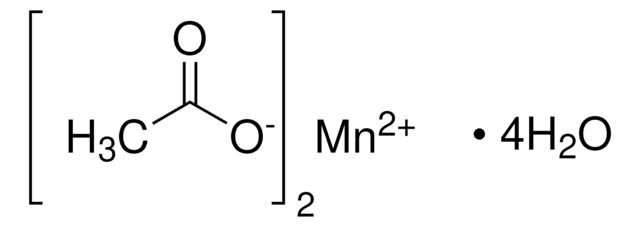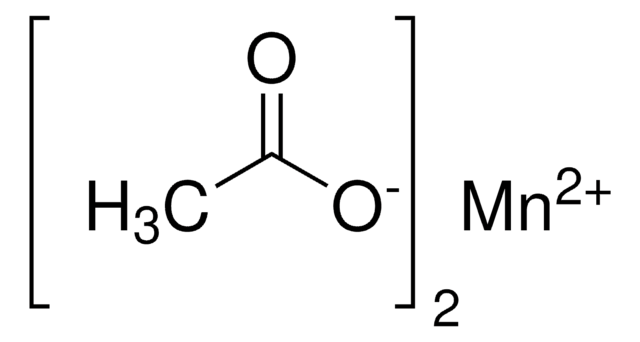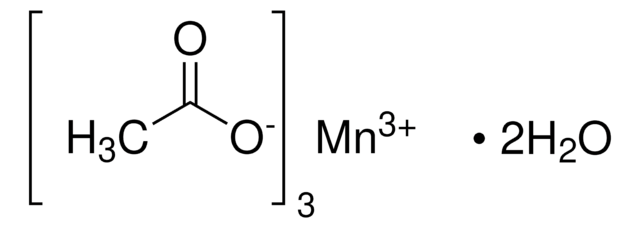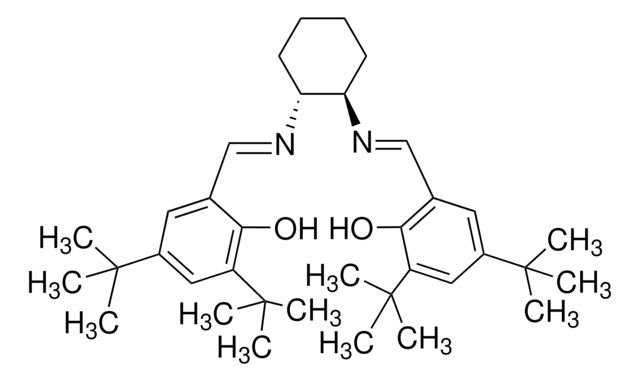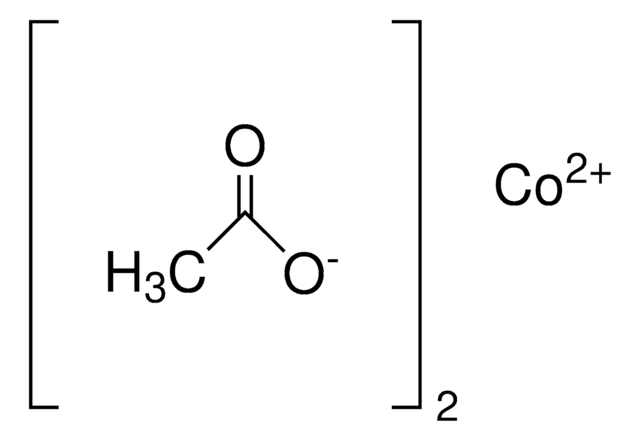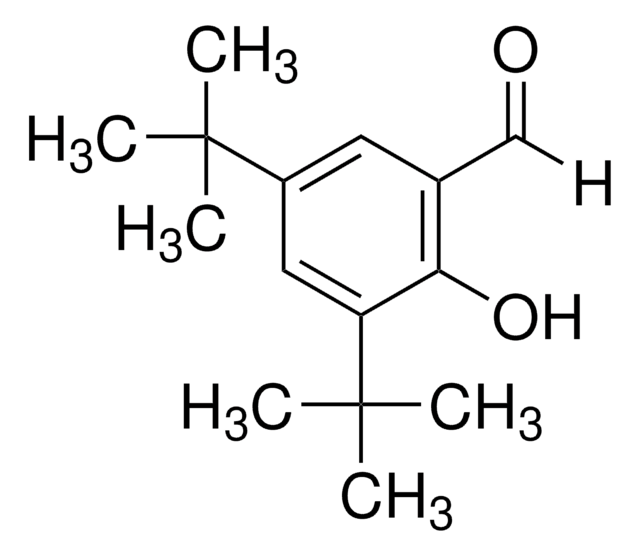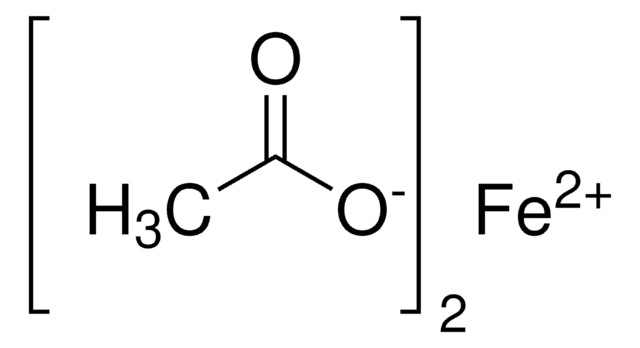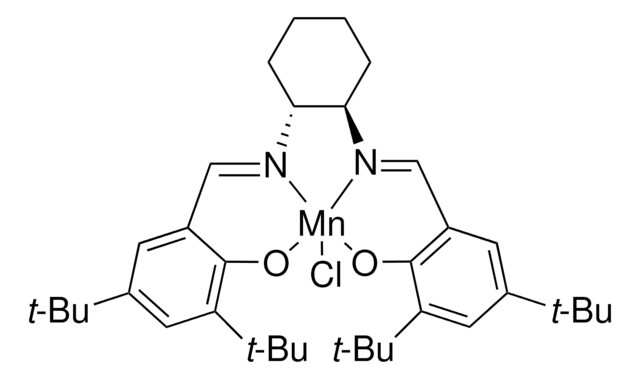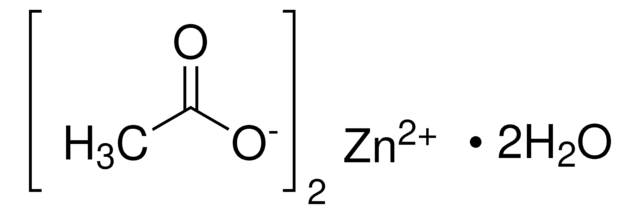Kluczowe dokumenty
229776
Manganese(II) acetate tetrahydrate
99.99% trace metals basis
Synonim(y):
Manganous acetate
About This Item
Polecane produkty
Próba
99.99% trace metals basis
Formularz
crystalline powder
przydatność reakcji
core: manganese
mp
>300 °C (lit.)
gęstość
1.589 g/mL at 25 °C (lit.)
ciąg SMILES
[H]O[H].[H]O[H].[H]O[H].[H]O[H].CC(=O)O[Mn]OC(C)=O
InChI
1S/2C2H4O2.Mn.4H2O/c2*1-2(3)4;;;;;/h2*1H3,(H,3,4);;4*1H2/q;;+2;;;;/p-2
Klucz InChI
CESXSDZNZGSWSP-UHFFFAOYSA-L
Szukasz podobnych produktów? Odwiedź Przewodnik dotyczący porównywania produktów
Powiązane kategorie
Opis ogólny
Zastosowanie
- Materiał wyjściowy w syntezie karboksylanów manganu, które są wykorzystywane do przygotowania cienkich warstw tlenku manganu metodą chemicznego osadzania z fazy gazowej (CVD).
- Prekursor w syntezie kompozytów mangan-TiO2 metodą chemicznej kondensacji par (CVC), które są wykorzystywane do utleniania NO w niskich temperaturach.
- Prekursor w przygotowaniu proszku NCM (LiNi1/3Co1/3Mn1/3O2) stosowanego jako materiał katodowy w akumulatorach litowo-jonowych.
Hasło ostrzegawcze
Warning
Zwroty wskazujące rodzaj zagrożenia
Zwroty wskazujące środki ostrożności
Klasyfikacja zagrożeń
Aquatic Chronic 3 - STOT RE 2 Inhalation
Organy docelowe
Brain
Kod klasy składowania
11 - Combustible Solids
Klasa zagrożenia wodnego (WGK)
WGK 2
Temperatura zapłonu (°F)
Not applicable
Temperatura zapłonu (°C)
Not applicable
Środki ochrony indywidualnej
dust mask type N95 (US), Eyeshields, Gloves
Wybierz jedną z najnowszych wersji:
Masz już ten produkt?
Dokumenty związane z niedawno zakupionymi produktami zostały zamieszczone w Bibliotece dokumentów.
Klienci oglądali również te produkty
Nasz zespół naukowców ma doświadczenie we wszystkich obszarach badań, w tym w naukach przyrodniczych, materiałoznawstwie, syntezie chemicznej, chromatografii, analityce i wielu innych dziedzinach.
Skontaktuj się z zespołem ds. pomocy technicznej